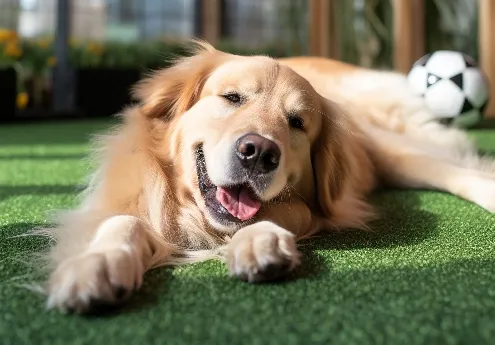
- Afrikaans
- Arabic
- Belarusian
- Bengali
- Czech
- Danish
- Dutch
- English
- Esperanto
- Estonian
- Finnish
- French
- German
- Greek
- Hindi
- Hungarian
- Icelandic
- Indonesian
- irish
- Italian
- Japanese
- kazakh
- Rwandese
- Korean
- Kyrgyz
- Lao
- Latin
- Latvian
- Malay
- Mongolian
- Myanmar
- Norwegian
- Persian
- Polish
- Portuguese
- Romanian
- Russian
- Serbian
- Spanish
- Swedish
- Tagalog
- Tajik
- Thai
- Turkish
- Turkmen
- Ukrainian
- Urdu
- Uighur
- Uzbek
- Vietnamese
Choosing the Right Grass for Sports Fields and Turf Maintenance Practices
Nov . 18, 2024 13:11 Back to list
The Importance of Sport Turf Grass Enhancing Athletic Performance and Aesthetics
Sport turf grass plays a crucial role in the world of athletics, impacting both performance and visual appeal. The surface on which sports are played can greatly influence the outcome of games, the safety of athletes, and the overall enjoyment of the sport. Understanding the characteristics and maintenance of quality turf grass is essential for sports facilities, players, and coaches alike.
Types of Sport Turf Grass
There are several types of turf grass utilized in sports, each with its own unique properties and best-use scenarios. Common varieties include Bermuda grass, Kentucky bluegrass, and perennial ryegrass.
1. Bermuda Grass Extremely popular in warmer climates, Bermuda grass is favored for its resilience and ability to withstand heavy foot traffic. This warm-season grass establishes quickly and has a fine texture, making it ideal for sports like football, soccer, and golf.
2. Kentucky Bluegrass Known for its lush appearance and ability to recover quickly from damage, Kentucky bluegrass is a cool-season grass that thrives in northern climates. It is often used in baseball and soccer fields, offering great wear tolerance and vibrant color.
3. Perennial Ryegrass This grass type is typically used in overseeding and as a transitional grass. With a quick germination period, it provides a fast solution for fields requiring immediate cover. Its fine texture makes it visually appealing, and it is often used in combination with other grasses to enhance durability and resilience.
Benefits of Quality Turf Grass
The benefits of maintaining high-quality turf grass extend beyond aesthetics. A well-maintained field can enhance athletic performance significantly. The right turf provides optimal traction, allowing athletes to stop, pivot, and accelerate without the risk of slipping or injury. Moreover, different sports have varying requirements for their playing surfaces, making the choice of turf grass critical for performance.
In addition to performance factors, the safety of players is paramount. Quality turf grass can absorb shock and reduce the impact of falls, thereby minimizing injuries. A well-constructed and maintained field also helps in drainage, preventing water accumulation that can lead to hazardous playing conditions.
sport turf grass

Maintenance Practices
To keep sport turf grass in top condition, regular maintenance is essential. This includes mowing, fertilization, aeration, and pest management. Mowing at the appropriate height varies by grass type and plays an important role in health and performance.
Fertilization ensures that the grass receives the nutrients it needs for growth and resilience. Regular soil testing can help determine the nutrient profile and guide fertilization strategies. Aeration, which involves perforating the soil with holes to allow air and nutrients to penetrate the grass roots, is another essential maintenance practice that promotes deep rooting and reduces compaction.
Pest management is crucial in preserving the integrity of turf grass. Effective practices include monitoring for signs of disease and pests, as well as employing integrated pest management techniques that minimize chemical use while ensuring the health of the grass.
Sustainability and Innovation
As environmental concerns continue to grow, many sports facilities are adopting sustainable practices when it comes to turf grass management. Organic fertilizers, efficient irrigation systems, and native grass species can reduce the environmental impact while maintaining high-quality playing surfaces.
Innovations in artificial turf technology also offer exciting alternatives. Advances in synthetic materials make these surfaces more durable and realistic, mimicking natural grass while providing consistent playing conditions regardless of weather.
Conclusion
Sport turf grass is a vital component of the athletic experience, influencing performance, safety, and aesthetic appeal. Understanding the various types of grasses and the importance of maintenance can help ensure that fields remain in optimal condition. As the industry evolves, embracing sustainability and innovative technologies will further enhance the future of sport turf grass. By prioritizing quality turf management, we can provide athletes with safe, high-performing surfaces that contribute significantly to their success and enjoyment of the sport.
-
The Benefits of Artificial Turf for Indoors
NewsJul.15,2025
-
How Artificial Grass Suppliers Ensure Quality Products
NewsJul.15,2025
-
Artificial Grass and Pets: A Space for Relaxation
NewsJul.08,2025
-
Balcony & Outdoor Decoration with Artificial Grass
NewsJul.08,2025
-
Best Indoor Artificial Grass for Home
NewsJul.07,2025
-
Best Pet Turf for Dogs: Safe & Durable Artificial Grass Options
NewsJul.07,2025
Products categories









